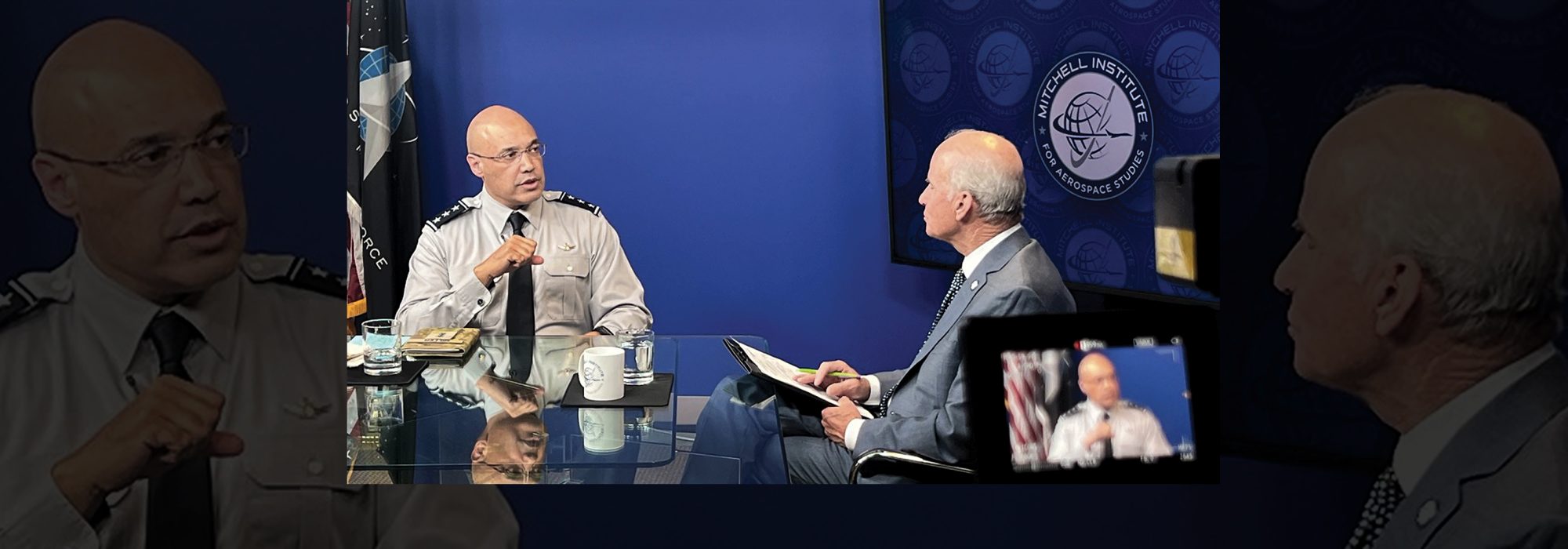Mission Deltas Align Space, Cyber, Intel
By Greg Hadley
When the Space Force first unveiled its Integrated Mission Delta (IMD) concept in September 2023, leaders emphasized how the concept would unite operations and sustainment under one roof, accelerating upgrades and fixes. But nearly a year later, the head of Space Operations Command says the new design better aligns space, cyber, and intelligence units and their people.
SpOC boss Lt. Gen. David N. Miller Jr. said the new deltas fill a “gap” that existed within SpOC in the way deltas were initially constructed.
“We didn’t integrate in that [original] formation all of the elements that we think are principle focus areas for the presentation of forces,” he said. “We focused on the space squadrons. We didn’t integrate into those deltas the [intelligence, surveillance, and reconnaissance] squadron or detachment or the cyber unit.”
At the same time, SpOC is changing how it presents that spacepower. The new Space Force Generation Model defines periods of focus, so that units and the Guardians assigned to them get a break from day-to-day operations to train, regenerate readiness through high-end training and exercises, and then stand ready for full-time operational duty.
That high-end training—part of the six-week “Ready” phase—is the key to improving, Miller said
To meet the threat, Miller added, deltas will train together across a mission area, focusing less on specific systems and more on how to accomplish an objective.
“The task is to improve it now based off the capabilities we have and rapidly spiral in as much capability as we can get,” Miller said.
The establishment of Space Forces-Space (S4S) last December as the organization responsible for presenting forces to U.S. Space Command, enabled SpOC to better focus its efforts. Prior to S4S standing up, SpOC was pulled in two directions, presenting forces to SPACECOM and training Guardians to support all the other combatant commands. Now that the duties are split, Space Operations Command can better focus on how “to provide that spacepower to all the combatant commands, not just U.S. Space Command,” Miller said.
“I was just at Buckley last week visiting Delta 4, which has the missile warning and tracking mission area,” Miller said. “The commander there is a guy named Col. Bobby Schmitt. He now trains, it’s not just SBIRS training … he’s training across the formation, across their ground-based radars, to track things like hypersonic vehicles better, to focus on potential fractional orbital bombardment system capabilities like the PRC had been building, better. So he’s training as a mission area.”
Following that, Miller added, deltas will train for “planning across formations,” figuring out ways for different units to support each other and emulating how the joint force would operate in a fight.
To make that happen, SpOC had to synchronize the Force Generation Model across units, a process that culminated July 1.
“Every unit went in together, they trained together, they were prepared together,” Miller said.
The integrated mission deltas include those elements and have produced better results, Miller said, citing an example: “We had an anomaly on one of our newer birds that we had launched in PNT,” Miller said. “And because [commander] Col. Andrew Menschner had the ISR unit to actually focus on the threat right then, and the capability to work the sustainment and fixes to that, he was able to fix something in hours that might have taken days in the past.”
Now commanders have a “clearer picture of the mission need,” he said, as well as the capabilities to defend their assets in space and cyberspace.
The Space Force has just two integrated mission deltas right now. One focuses on GPS, while the other focuses on electronic warfare. But soon two more IMDs will be formed. The head of Space Systems Command, Lt. Gen. Philip A. Garrant, said in May that two missile warning and space domain awareness IMDs will stand up this summer, and more could be coming. Miller said that SpOC’s aim is that “over the next year, we will complete the transition of all the deltas that need to be integrated mission deltas into IMDs.”
Yet not all SpOC deltas will become IMDs. Deltas focused on ISR and cyber won’t make the shift.
“In missions where we are providing capability as part of the combat force, either presented or sustained, where we need to integrate those three mission capabilities of space, cyber, and ISR, I think you’ll see those as potential candidates for integrated mission deltas,” Miller said. As for Delta 6, SpOC’s cyber delta, and Delta 7, the ISR delta, “I’m not sure that those need to be integrated mission deltas.”
They could still see changes in structure, however, Miller said. “For example, our targeting squadron: As a programmer I was the one who laid in the requirements to build that squadron. I know that I don’t have enough capability there to meet all the needs of the combatant commanders. I think there’s growth in some of those missions in particular, I just don’t know that they need to be integrated mission deltas.”


